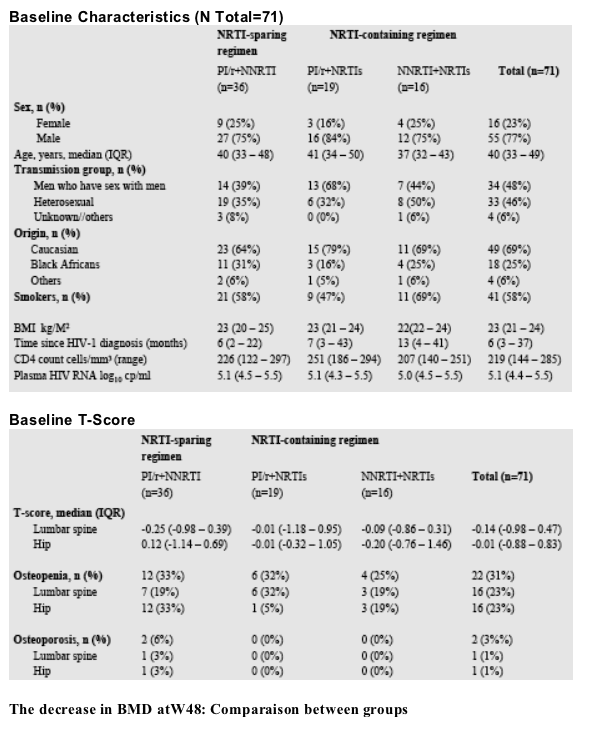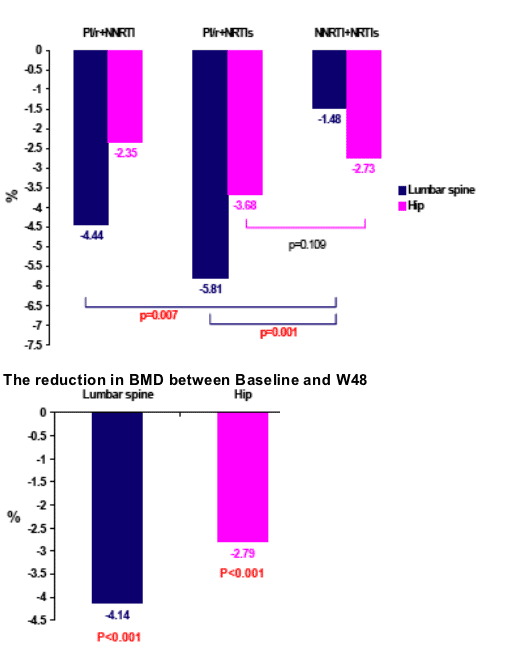 |
 |
 |
| |
HIV & ART Led to Bone Loss
|
| |
| |
First line PI-containing regimens cause a greater decrease in bone mineral density compared NNRTIcontaining regimens in HIV-1 infected patients: a substudy of HIPPOCAMPE-ANRS 121 trial.
Reported by Jules Levin
15th CROI, Feb 3-6, 2008, Boston
C Duvivier1,2, S Kolta3 , L Assoumou2, J Ghosn1,2, S Rozenberg4, R Murphy1,2, C Katlama1,2, D Costagliola1,2 and the ANRS 121 study group.
1AP-HP, Hopital Pitie Salpetriere, Service des Maladies Infectieuses et Tropicales; 2INSERM, U720, Paris, F-75013 France; UPMC Paris Univ 06, UMR S 720, Paris, F-75013 France; 3AP-HP, Hopital
Cochin, Service de Rhumatologie B, Universite Paris Rene Descartes, Paris; F-75014 France; 4AP-HP, Hopital Pitie Salpetriere, Service de Rhumatologie; F-75013 France.
AUTHOR CONCLUSIONS
BMD was impaired in 31% of patients before starting any ARVs suggesting a causative role of HIV.
After one year of ARVs, there was a clinically significant decrease in BMD at hip and lumbar spine, comparable to what is observed in post-menopausal women.
After one year, the decrease in lumbar spine BMD was more pronounced in patients receiving either PI-containing regimen compared to NNRTI/NRTIs. BMD at specific sites should be monitored during lifelong ARV therapy.
BACKGROUND
No randomized study has evaluated the impact of different ARV regimens on the evolution of bone mineral density (BMD) at specific sites. We evaluated the change in BMD at hip and lumbar spine in patients initiating ARVs with one of the following regimens: PI/r/NNRTI (an NRTI-sparing regimen), PI/r/NRTIs or NNRTI/NRTIs.


|
| |
|
 |
 |
|
|